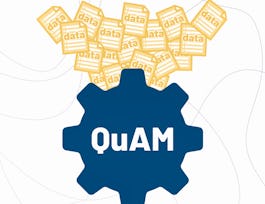In this 1-hour long guided project, you will learn how to use the "What-If" Tool (WIT) in the context of training and testing machine learning prediction models. In particular, you will learn a) how to set up a machine learning application in Python by using interactive Python notebook(s) on Google's Colab(oratory) environment, a.k.a. "zero configuration" environment, b) import and prepare the data, c) train and test classifiers as prediction models, d) analyze the behavior of the trained prediction models by using WIT for specific data points (individual basis), e) moving on to the analysis of the behavior of the trained prediction models by using WIT global basis, i.e., all test data considered.



Interpretable Machine Learning Applications: Part 4

Instructor: Epaminondas Kapetanios
Sponsored by Louisiana Workforce Commission
(11 reviews)
Recommended experience
What you'll learn
Set up a machine learning application in a "zero configuration" environment such as Google's Colab(oratory) Research platform.
Set up and configure the What-If Tool to analyze the behavior of exemplary machine learning prediction models.
Details to know

Add to your LinkedIn profile
Only available on desktop
See how employees at top companies are mastering in-demand skills

Learn, practice, and apply job-ready skills in less than 2 hours
- Receive training from industry experts
- Gain hands-on experience solving real-world job tasks
- Build confidence using the latest tools and technologies

About this Guided Project
Learn step-by-step
In a video that plays in a split-screen with your work area, your instructor will walk you through these steps:
Set up the environment for the "What-If" tool (WIT) as an extension in Jupyter and as a Google's Colaboratory notebook, including importing of the dataset (e.g., white wine quality data)
Train classifiers, e.g., Decision Tree and Random Forest, as exemplary machine learning prediction models to make predictions about the quality of white wines.
Launch the What-If Tool (WIT) widget. This task will allow us to get a first understanding on how our prediction model(s) behave at both individual and global levels.
Use the What-If Tool (WIT) features to explain the behavior of a prediction model on an individual basis.
Use the What-If Tool (WIT) advanced features to explain the behavior of a prediction model on an individual basis.
Use the What-If Tool (WIT) features to explain the behavior of a prediction model on a global basis.
Recommended experience
Some basic knowledge on machine learning, statistics and data science.
3 project images
Instructor

Offered by
How you'll learn
Skill-based, hands-on learning
Practice new skills by completing job-related tasks.
Expert guidance
Follow along with pre-recorded videos from experts using a unique side-by-side interface.
No downloads or installation required
Access the tools and resources you need in a pre-configured cloud workspace.
Available only on desktop
This Guided Project is designed for laptops or desktop computers with a reliable Internet connection, not mobile devices.
Why people choose Coursera for their career




You might also like

Coursera Project Network

Alberta Machine Intelligence Institute

Open new doors with Coursera Plus
Unlimited access to 10,000+ world-class courses, hands-on projects, and job-ready certificate programs - all included in your subscription
Advance your career with an online degree
Earn a degree from world-class universities - 100% online
Join over 3,400 global companies that choose Coursera for Business
Upskill your employees to excel in the digital economy




